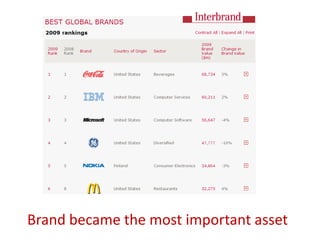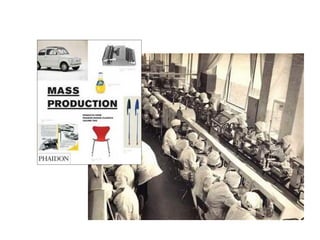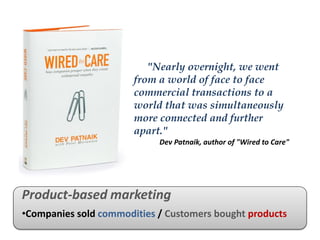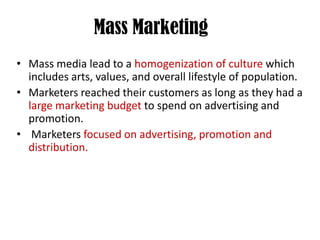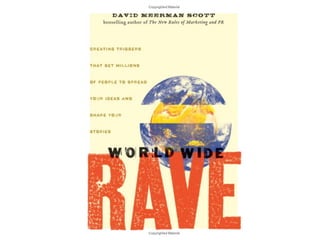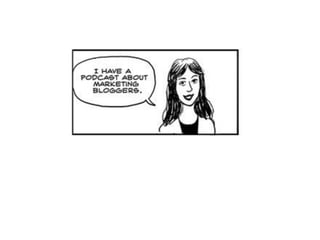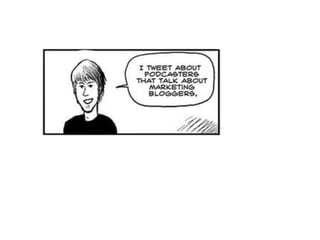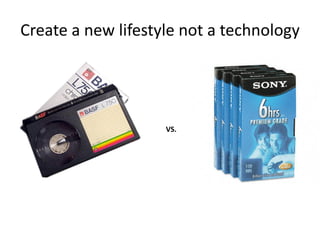Marketing The Future
- 1. Marketing the Future Iyad Mourtada iyadmourtada.com
- 2. - Attracting customers: (Stand for something) - Connecting with customers (Engage customers) - Motivating customers (Stimulate action)
- 3. Marketing the Future • Do we need to market the future? • The way marketing used to be Future-based Marketing: 1) Understand online customers’ profiles, behaviors, and perceptions. 2) Inspire customers to think (different) about the future 3) Allow customer to be part of the future 4) Create a new lifestyle not a technology
- 4. $ % of Marketing Cost % of Production Cost Time Marketing the future is more important the future itself
- 5. M Brand became the most important asset
- 6. Brand value accounts for approximately %30 of the market capitalization of the S&P 500 (Millward Brown Optimor, 2007).
- 8. Mass Production era • More immigrants coming to the United States • The steam engine and electric power opened the door for factories to replace workers with machines and that increased the production and improved the products' quality. • The rail roads in 1870 connected isolated states and opened new markets for local factories. • Products were the same and as the demand was higher that the production, customers were willing to buy the products as long as they satisfy their needs.
- 9. Mass Production era • "Build it and they will come". • Customers had limited choices and limited commutation channels to learn about products. • Advertising in Newspapers and in billboards were the main tools that factories used to make customers aware about their products and expand beyond their local market. • Marketers were focusing products not their customers
- 10. "Nearly overnight, we went from a world of face to face commercial transactions to a world that was simultaneously more connected and further apart." Dev Patnaik, author of "Wired to Care" Product-based marketing •Companies sold commodities / Customers bought products
- 11. Mass Marketing • Companies introduced new products and differentiated their packaging. • Marketers used "branding" to demonstrate the values of their products. • Companies produced more than what customers could consume • Communication channels were trying to provide media contents that are acceptable by the masses.
- 12. Mass Marketing • Mass media lead to a homogenization of culture which includes arts, values, and overall lifestyle of population. • Marketers reached their customers as long as they had a large marketing budget to spend on advertising and promotion. • Marketers focused on advertising, promotion and distribution.
- 13. Mass Marketing Mass media-based marketing •Companies sold goods / Customers bought benefits Product-based marketing •Companies sold commodities / Customers bought products
- 14. • Companies entered into the new markets with new products and more TV stations emerged. • Marketers customized products to make them more relevant to customers' lives. • Customers had more choices and options. • Marketers increased their advertising spending to be able to reach larger segments.
- 15. • Marketers understood that customers care about relationship, love, happiness, success and power and they do not really understand many of the benefits and features of most of the products that they buy. • Marketers started convincing their customers that their products could bring them certain emotions by linking these emotions with their products.
- 17. Customer-based marketing •Companies sold brands / Customers bought Emotions Mass media-based marketing •Companies sold goods / Customers bought benefits Product-based marketing •Companies sold commodities / Customers bought products
- 18. Marketing-Customization • Companies started ".com" businesses. Marketers saw a big opportunity for them to switch from TV advertising to online advertising. • Marketers tried to use the same passive advertising that they used in print and TV • TV stations offered more customized programs that target certain audience. (Segmented TV channels) • Niche marketing was one of the advantages that customers took from the internet.
- 19. “Marketing is all about spreading ideas.” Seth Godin Market-based marketing (Inspiring) •Companies sold Ideas / Customers bought Experiences Customer-based marketing (Persuading) •Companies sold brands / Customers bought Emotions Mass media-based marketing (Informing) •Companies sold goods / Customers bought benefits Product-based marketing •Companies sold commodities / Customers bought products
- 21. Welcome to the Digital Age
- 22. Welcome to the Digital Age • Websites are available 24 hours and sell unlimited products. • The internet transform from a primarily transactional medium to relationship building. • The internet transformed the power from companies to consumers and made them as much producers as consumers. • The internet allowed customers to be connected at anytime and approximately for free.
- 25. Customers had always had the same needs and wants but their ways of satisfying these needs and reaching their markets evolved and changed their social lives and consumption habits.
- 26. Who are your customers?
- 44. Inspire customers to think (different) about the future
- 45. Allow customer to be part of the future 25,000 AFOLs each buy around $1,000 of lego products a year Adults Fan of Lego (AFOL) Return of Engagement (ROE)
- 46. Create a new lifestyle not a technology VS.
- 47. Create a new lifestyle not a technology
- 48. Create a new lifestyle not a technology
- 50. Unleash the Magnetic Power of Your Brand Iyad Mourtada @iyadmourtada iyadmourtada.blogspot.com iyad.mourtada@gmail.com





